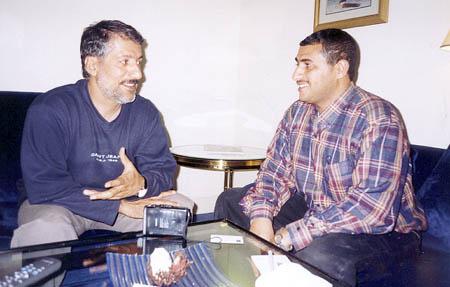Objectives of the U.S. War against Terror (Part 3 of 10) [Archives:2001/01/Law & Diplomacy]
Ahmad M. Abdulghani
Chairman of
al-Jazeera &
al-Khaleej Center for Studies
As a consequence of the Vietnam’s dilemma, the United States attempted to adopt a new political and military approach towards the Asian countries in compliance with Nexen Principle. The principle which was declared in 1966 stressed USA’s commitments towards certain countries in the world through creating a nuclear shield to defend itself and its allies. But in case of non-nuclear aggressions the USA would restrict its support to providing its allied countries with military and economic aids.
The contents of Nexen Principle focused on the utilization of human resources of its allied states; however the principle did not change the fundamental objectives of the U.S. foreign policy. President Nexen himself stressed this point in an article published in 1972, stating “We have retained the concept of USA’s objectives, but had reconsidered the ways to achieve them. This will happen through customizing them in ways that suit the international variables.”
In reality, the US reconsideration of the means to achieve its goals focused on a set of policies, which will be elaborated in the rest of the article.
The American military leadership adopted the so-called the “Blue Water” policy which greatly relayed on the U.S. marine forces. Hence, it tended to deploy its marine fleets all over the world, particularly near the territorial waters of the developing countries as a way of pressurizing those nations. It also sought to get facilities in sea in other part of the world.
The United States attempted to involve many regional alliances within its global political system. This was confirmed by the former U.S. Secretary of State, Henry Kissinger, when he stated that if the United States was serious to apply a fruitful foreign policy, it should be attentive to forming global coalitions that would consequently assume defending their soils with the U.S. support. He added that the USA would focus on building general systems more than occupying itself with the domestic issues of those regions.
Based on this approach the U.S. administration vigorously attempted to attract both Iran and Saudi Arabia to its side. It generously provided them with all sorts of arms in a drive to realize its objectives in the region. Selling military equipment has become an integral part for safeguarding the U.S. interests in this region, a U.S. marine forces periodical reported.
Although, this approach collapsed with the removal of the Shah of Iran in 1979, the USA started its direct military expansion in the region two years earlier, namely in August 1977 when Jimmy Carter announced order No. 18 concerning strategic military issues; the Gulf region, W. European countries, Southern Korea and Israel were all considered U.S. interests zones. Accordingly, it treated any attempts to have a presence in the region as working against the U.S. top interests which should be retaliated against by all the available means, including the use of military force.
In 1979-1980, the United States went ahead with implementing its rapid intervention program which had 120,000 troopers, including motorized infantry forces, marines, tactical warplanes, and four marine fleets. The Pentagon declared in March 1980 the setting up of the command-staffs of the rapid deployment forces, which was later entrusted to the U.S. Central Command formed by the Pentagon. The scope of action of these forces covered 19 countries stretching from Kenya to Pakistan.
——
[archive-e:01-v:2001-y:2001-d:2001-12-31-p:./2002/iss01/l&d.htm]


